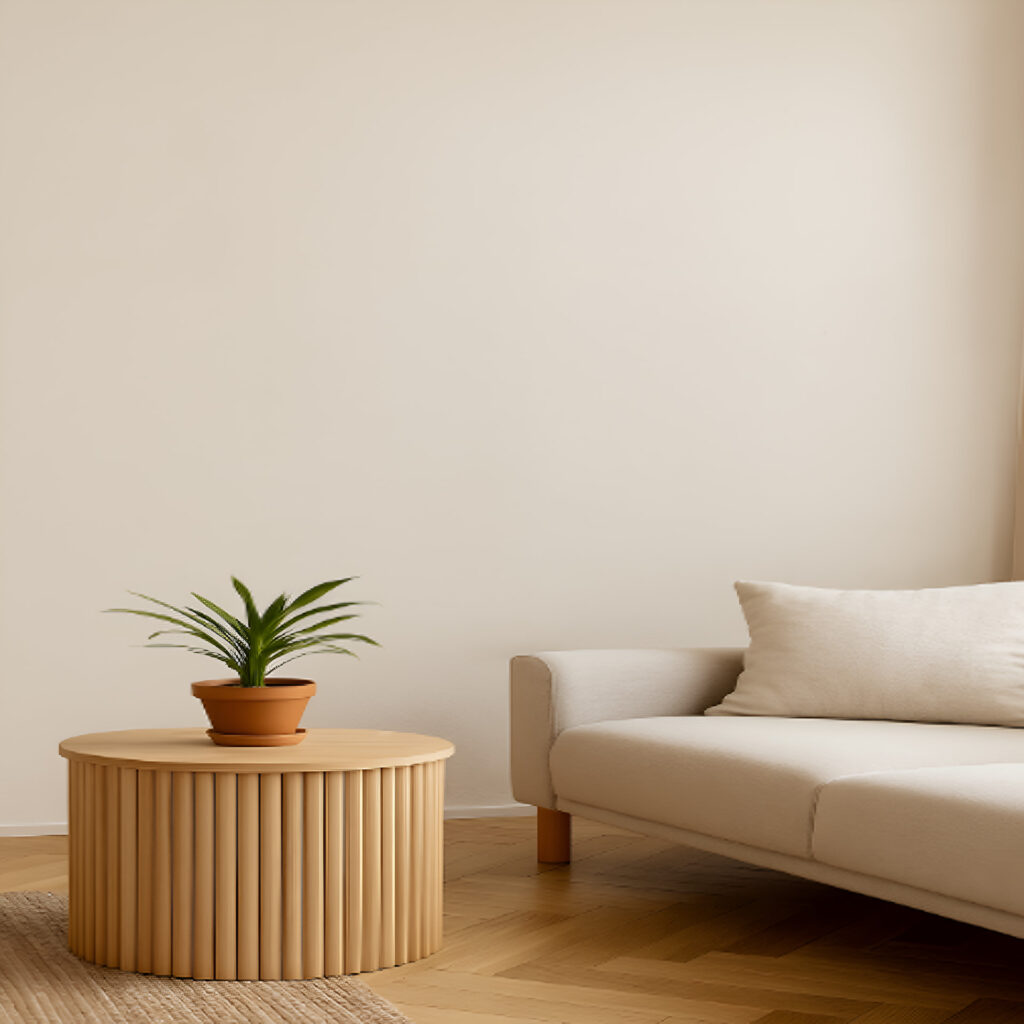Are you designing a new home or renovating your current space and wondering how to make it beautiful while being kind to the planet? The choice of materials is the most important decision you will make. Across the UAE, an exciting shift is happening as homeowners and designers increasingly seek out Sustainable Interior Materials in Dubai. This movement is driven by a desire to create healthier living environments, reduce carbon footprints, and support a greener future for the region. This guide will walk you through the top eco-friendly materials that are not only good for the earth but also add unique beauty and value to your interior spaces.
Why Sustainable Materials Matter in the UAE
The UAE’s commitment to sustainability, highlighted by initiatives like the UAE Net Zero 2050 strategy and Dubai’s Green Building regulations, makes choosing eco-friendly materials more relevant than ever. Using sustainable materials helps conserve precious natural resources and reduces energy consumption in your home. For instance, materials with high thermal mass can keep interiors cooler, lowering the dependency on air conditioning. Furthermore, many conventional building materials release harmful chemicals into the air, a significant concern in a hot climate where windows are often closed. Sustainable alternatives often have low or zero Volatile Organic Compounds (VOCs), leading to better indoor air quality and a healthier home for your family.
Why Bamboo Is a Top Choice for Sustainable Interiors
Bamboo is one of the most popular sustainable materials worldwide, and for good reason. It is technically a grass, not a wood, and it grows to maturity in just three to five years, making it a highly renewable resource compared to hardwood trees that can take decades to grow. Bamboo is incredibly strong and durable, perfect for flooring, cabinetry, and furniture. Its light color and distinctive grain bring a warm, natural aesthetic to any room. When sourcing bamboo, look for certifications like the Forest Stewardship Council (FSC) to ensure it has been harvested responsibly without harming the ecosystem.
The Beauty of Reclaimed Wood
Reclaimed wood offers a beautiful solution that saves trees and reduces waste. This wood is salvaged from old buildings, barns, factories, and even retired shipping crates. Each piece of reclaimed wood carries a unique history and character, seen in its weathering, nail holes, and grain patterns. Using it for accent walls, beams, or flooring adds instant warmth and a story to your space. By giving old wood a new life, you prevent it from ending up in a landfill and eliminate the need for new timber to be cut down, making it one of the best sustainable materials for interior design that prioritizes uniqueness.
Why Recycled Metals Are an Eco-Friendly Choice
Metals like aluminum and steel are highly recyclable without any loss of quality. Using recycled metal instead of virgin ore reduces energy consumption by up to ninety-five percent. In interiors, recycled aluminum is used for light fixtures, furniture legs, and decorative elements, offering a sleek, modern look. Recycled steel is often used for structural elements and kitchen hoods. This material choice supports a circular economy where products are continuously reused. It is a durable and long-lasting option that brings an industrial chic vibe to contemporary Dubai homes and offices.
Low-VOC Paints for a Healthier Home
The paint on your walls can have a big impact on your indoor air quality. Traditional paints contain high levels of VOCs, which are chemicals that evaporate into the air at room temperature, causing that “new paint” smell. These fumes can lead to headaches, dizziness, and long-term health issues. Low-VOC and zero-VOC paints are now widely available and perform just as well as conventional paints. They are an essential choice for creating a healthy home, especially for children’s rooms and bedrooms. You can achieve any color you desire without compromising the air you breathe.
Sustainable Style with Locally Sourced Stone
While natural stone like marble and granite is a finite resource, its incredible durability makes it a sustainable choice if selected wisely. A stone floor or countertop can last for a lifetime, meaning it won’t need to be replaced for many years. To enhance its eco-credentials, opt for stone that is sourced locally or regionally. Using materials from within the Middle East significantly reduces the transportation emissions associated with shipping from Europe or South America. This approach supports local economies and lowers the overall carbon footprint of your project.
Cork: A Versatile and Comfortable Option
Cork is a remarkable material harvested from the bark of cork oak trees without cutting them down. The trees continue to live and grow, and their bark regenerates, making cork a truly renewable resource. Cork is naturally antimicrobial, hypoallergenic, and soft underfoot, making it an excellent choice for flooring, especially in bedrooms and play areas. It also provides excellent thermal and acoustic insulation. Cork can be used as a sustainable material for interior walls in the form of pinboards or even as decorative wall tiles, adding texture and functionality to a room.
Green Ceramics and Tiles: Innovation in Recycling
The tile industry has made significant strides in sustainability. Many manufacturers now produce tiles using recycled content, such as glass and ceramic waste. Others have implemented water recycling systems in their production plants and use renewable energy to power their factories. These green ceramics and tiles come in a vast array of styles, from sleek large-format tiles to intricate mosaics. When shopping for tiles, look for companies that publish their sustainability practices and certifications, ensuring your beautiful backsplash or floor is also an environmentally responsible choice.
Organic and Natural Textiles: Softness from the Earth
The fabrics you choose for upholstery, curtains, and bedding are a key part of a sustainable interior. Conventional cotton farming uses a large amount of pesticides and water. Instead, opt for organic cotton, linen (made from flax), hemp, or wool. These natural fibers are biodegradable and produced with fewer chemicals. They are breathable and add a layer of tactile comfort to your home. Using these organic textiles ensures that the softness you feel is also gentle on the environment, completing the holistic approach to green design.
Conclusion:
Choosing Sustainable Interior Materials in Dubai is a powerful way to create a home that aligns with modern values of health and environmental stewardship. It is a thoughtful process that combines aesthetic vision with ecological responsibility. At Rawaa Interiors, we are passionate about guiding our clients through the wide range of sustainable interior materials and finishes available today. Discover custom doors in Dubai that can be crafted using responsibly sourced wood and sustainable finishes upon request. We help you select the perfect options that meet your design goals, budget, and commitment to a greener planet. Let us partner with you to create a space that is not only stunning but also built responsibly for the future. Contact Rawaa Interiors Via Email interiorsbyalrawaa@outlook.com or by Phone Number +971 50 222 8146 or +971 52 934 3293
Frequently Asked Questions
Are sustainable interior materials more expensive than conventional options?
While the initial cost of some sustainable materials can be higher, they often provide long-term value through greater durability, energy efficiency, and lower maintenance costs. Their price is also becoming more competitive as demand increases and production methods improve.
How can I verify if a material is truly sustainable?
Look for independent certifications on the product or from the manufacturer. Key certifications to trust include Forest Stewardship Council (FSC) for wood, Cradle to Cradle (C2C) for overall product sustainability, and Green Tag for low emissions and ethical production.
Is bamboo suitable for the humid climate of Dubai?
Yes, high-quality bamboo that has been properly manufactured and sealed is very suitable. It is naturally resistant to moisture and warping when treated correctly, making it a durable and stable choice for flooring and cabinetry in the UAE’s climate.
Can I use sustainable materials for a traditional Arabic interior design style?
Absolutely. Reclaimed wood for ornate ceiling beams, natural stone for flooring, and handmade ceramic tiles with traditional patterns are excellent ways to incorporate sustainable materials into a classic Arabic or Majlis-style design aesthetic.
Where can I source these materials within the UAE?
The market for sustainable materials in the UAE is growing rapidly. Many major building material suppliers now stock eco-friendly options. Specialized showrooms and distributors also focus exclusively on green building products, making them easier to find than ever before.

